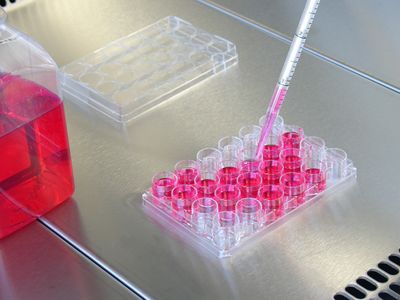(1) Researchers seed JeWells—pyramid-shaped wells in a high-density array, each made of four highly reflective gold-plated mirrors—with stem cells. After a period of growth, the resulting fixed or live organoids are stained with fluorescent dyes (2) and imaged via Single-Objective Selective-Plane Illumination Microscopy (soSPIM), an adapted form of light-sheet fluorescence microscopy that allows for subcellular resolution imaging. This technique uses a simple inverted microscope to take 2D cross-section images of the sample layer by layer, which are assembled into a 3D picture of the organoid.

Read the full story.





